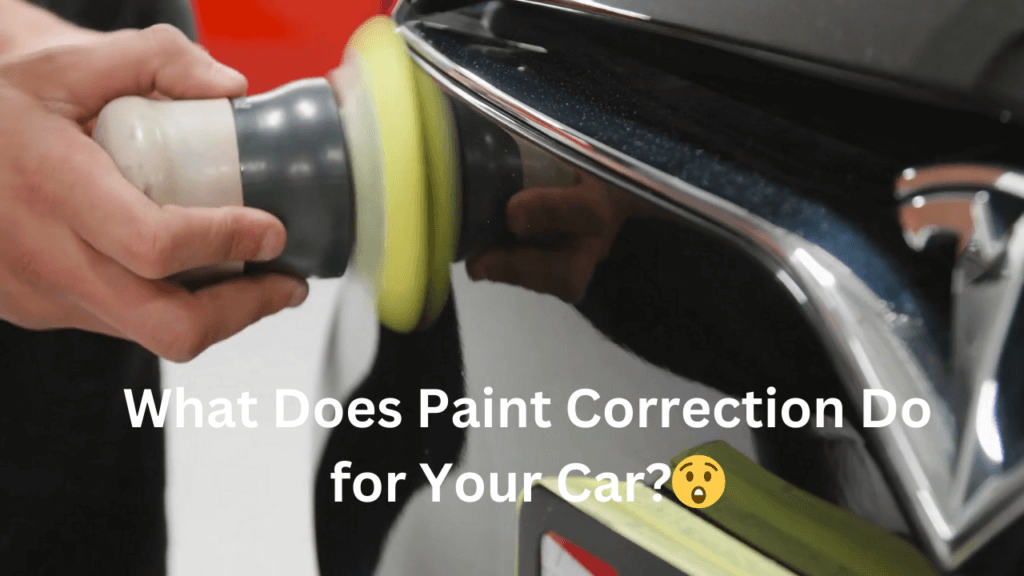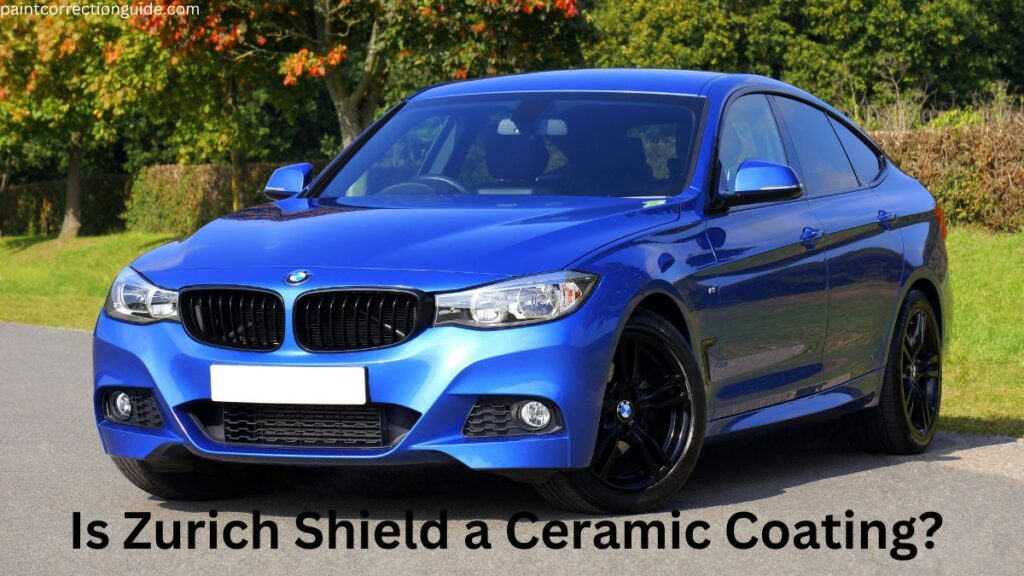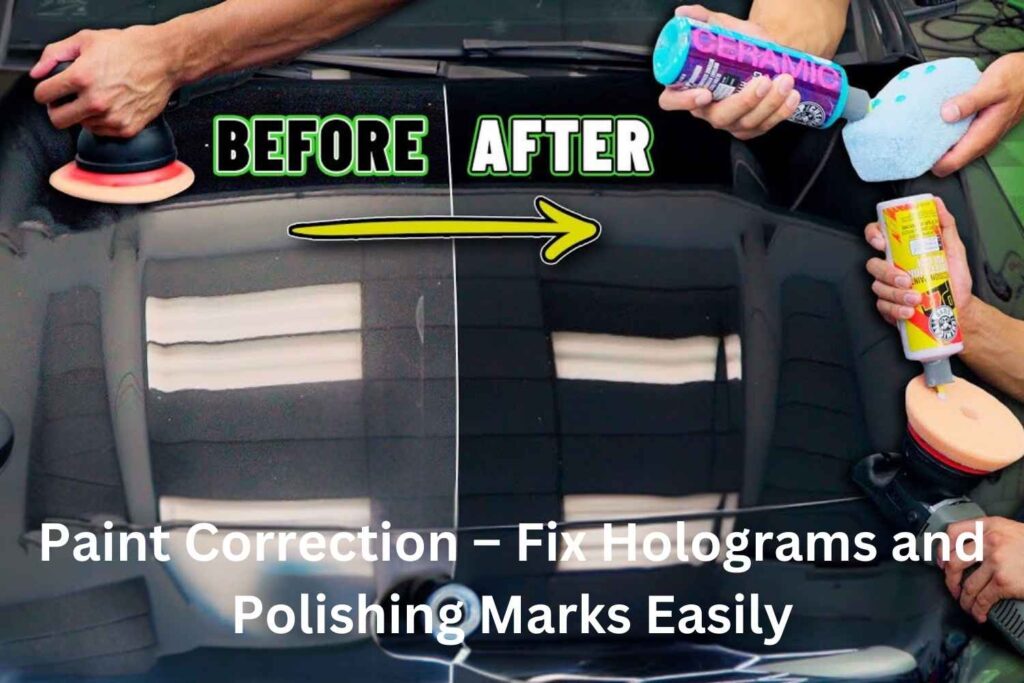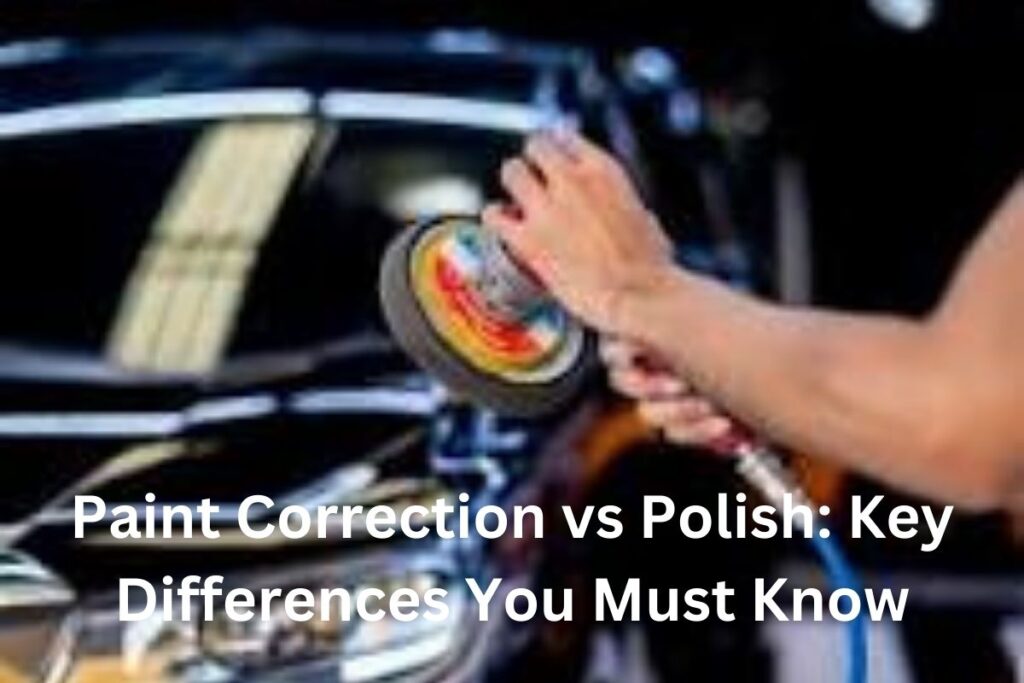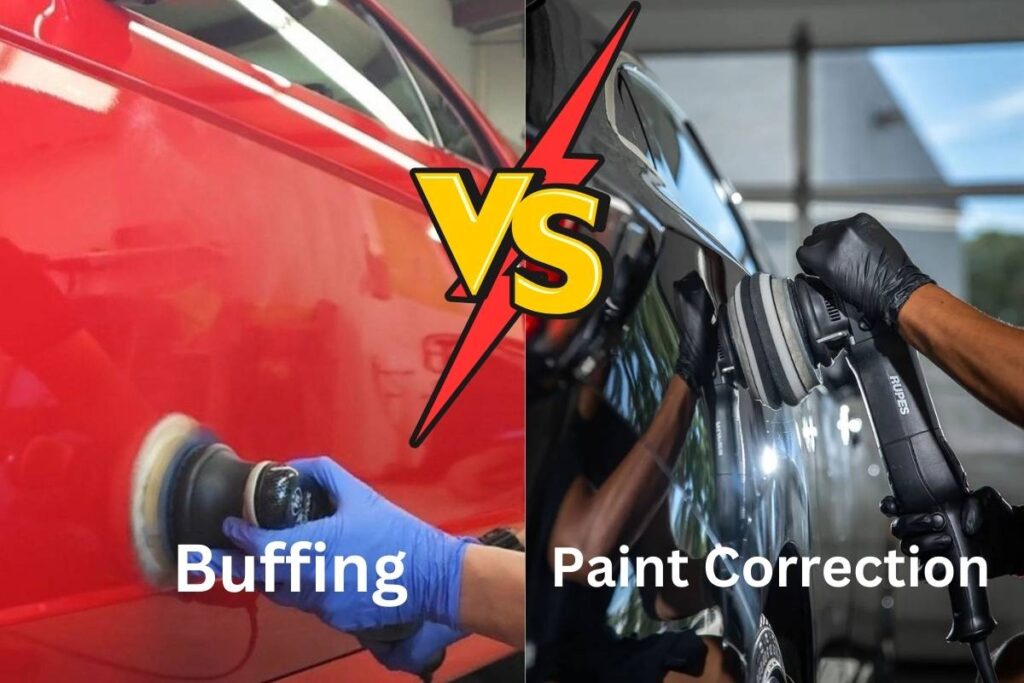Have you ever wondered why some cars have that flawless, mirror-like shine while others look dull and scratched? What does paint correction do to achieve such a polished finish? Paint correction is more than just a wash or wax; it’s a professional process that removes scratches, swirl marks, and imperfections to restore a car’s paint to its original beauty.
In this post, we’ll dive into exactly how paint correction works, why it’s so popular among car owners and the real benefits it offers. By the end, you’ll know if paint correction is the right choice for keeping your car looking fresh and vibrant for years to come.
Table of Contents
ToggleWhat Does Paint Correction Do?

So, what does paint correction do? Let’s dive into the details!
Imagine a car is like a smooth, shiny apple. Over time, though, things like dust, dirt, scratches, and even sunlight can leave little marks on the apple’s skin. For cars, these marks are called imperfections, and they can include scratches, swirl marks, and even something called oxidation (which is when the paint starts to look dull and faded because of too much sun).
Paint correction’s job is to get rid of these imperfections and make the car look smooth and shiny again. It’s almost like taking an eraser to the scratches and marks on the paint. By using special tools and products, paint correction removes the scratches and fixes the damage. This makes the car’s paint look new and bright again.
The way it works is by using a series of careful steps. Professionals take special machines and compounds (kind of like special car “lotions”) that rub away the damaged top layer of the paint. They do this very carefully to make sure they only remove what’s necessary. This “correction” brings back the car’s original look, just like it was when it was brand new.
The biggest benefits? First, it makes the car look beautiful. All the scratches and marks are gone, so the paint looks deep and glossy. Second, it helps protect the car from more damage in the future. With no scratches or swirl marks left, the car’s paint has a smooth surface that’s less likely to pick up dirt or damage. It’s like giving the car a little shield!
Paint Correction Process Overview
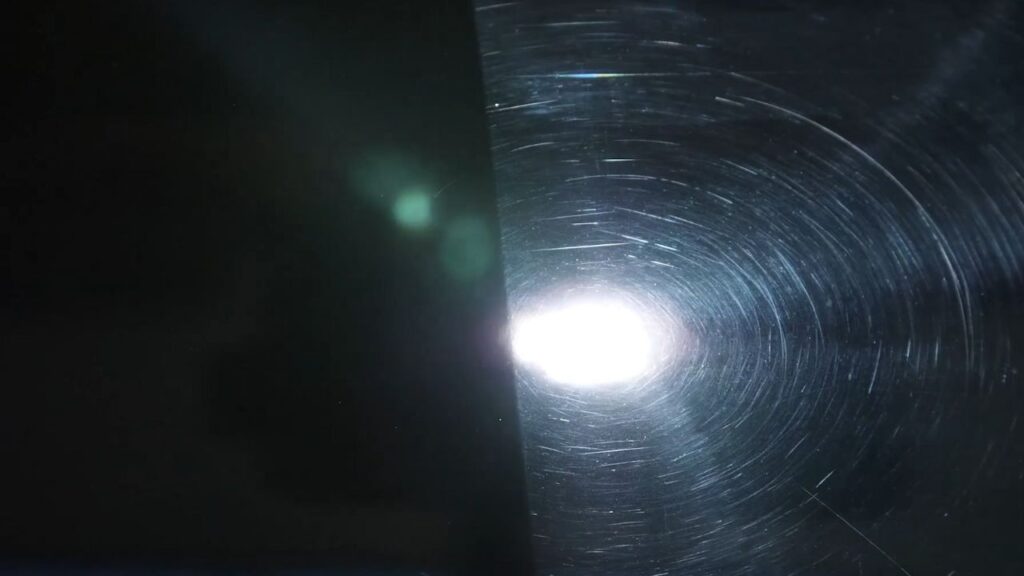
Now that we know what paint correction does, let’s talk about how it actually works. Paint correction is a careful, step-by-step process to fix the paint on a car. Let’s look at each step:
Step 1: Inspection and Preparation
The first thing to do is check the car’s surface. Professionals look at the paint closely to see all the tiny scratches, swirl marks, or spots that need fixing. This is like looking at a piece of paper to see where you need to erase marks.
Once they know what needs work, they clean the car. The surface has to be very clean and dry before starting. This way, there’s no dirt or dust that could get in the way. Think of it like wiping a chalkboard clean before drawing on it again.
Step 2: Multi-Stage Compounding and Polishing
Here’s where the real “correction” begins. Professionals use a machine with a spinning pad and special compounds (like a thick liquid) to gently rub away the top layer of damaged paint. This is usually done in stages – a rougher compound is used first to remove deep scratches, and then finer compounds are used to make the paint look even smoother.
Each stage makes the surface smoother and brings out more shine. Sometimes, this step has two or three stages, depending on how damaged the paint is. This part takes time and skill, so most people leave it to professionals who know exactly how much to polish without damaging the paint.
Step 3: Final Polishing and Finishing
After fixing all the imperfections, it’s time for the final polish. This polish brings out a deep, beautiful shine in the paint, making the car look glossy and vibrant. This step is like putting on the last coat of paint on a drawing to make it pop.
At this point, the car looks almost brand new. The whole process can take a few hours to an entire day, depending on the car’s size and the amount of damage. It’s a very detailed job, which is why many people choose to get it done professionally. Professionals have the skills, tools, and patience to make the car look amazing.
Benefits of Paint Correction for Cars
Now that we’ve learned what paint correction does and how it works, let’s talk about why it’s so helpful. Paint correction has a lot of great benefits for a car. Here’s why so many people choose it to keep their cars looking fantastic:
Improves Appearance
The first thing paint correction does is make a car look beautiful again. By removing scratches, swirl marks, and other imperfections, the paint looks smooth and shiny, just like it did when the car was brand new. Imagine wiping away dirt on a mirror – once it’s clean, it sparkles! Paint correction brings back that fresh, clean look.
Enhances Value
A car that looks new and well-maintained is often worth more money, especially if you plan to sell it. Think about it: would you rather buy a car with scratches and marks or one that looks smooth and shiny? Paint correction can increase the value of the car by making it look like it’s in top condition.
Protects the Paintwork
Paint correction doesn’t just make the car look good; it also helps protect the paint. After the imperfections are removed, a protective coating (like wax or a ceramic coating) can be added. This coating helps keep the paint safe from new scratches, dirt, and even sun damage. It’s like putting on sunscreen before going outside – it helps keep the paint safe and looking nice for longer.
Prevents Future Damage
When a car’s paint is full of scratches and swirl marks, it can get damaged even more easily. These tiny imperfections make the paint weak. By removing them, paint correction makes the surface smooth, which helps prevent further scratches. This means less chance of new damage in the future.
In short, paint correction is like giving a car a new suit of armor. It looks better, it’s better protected, and it can even be worth more. All of these benefits make paint correction a great choice for keeping a car looking its best.
Paint Correction vs. Polishing: Is It the Right Choice for Your Car?

You might wonder, “Is paint correction the same as polishing?” While they might sound similar, they’re actually different. Let’s look at how they compare and see what paint correction does that regular polishing doesn’t.
Polishing is like giving the car a quick shine. It can make the paint look smoother and brighter, but it doesn’t fix deeper damage. Polishing just improves the surface by making it look shiny for a short time. It’s great for light maintenance, but it doesn’t remove scratches, swirl marks, or oxidation.
Paint Correction, on the other hand, goes deeper. It removes imperfections instead of just covering them up. With paint correction, the goal is to fix the paint and make it smooth by getting rid of all the marks, scratches, and faded spots. This means that the car’s paint doesn’t just look better—it actually is better, with no damage left behind. Paint correction makes a long-term difference, while polishing is more of a temporary touch-up.
So, what does paint correction do that polishing can’t? It targets and removes real damage from the paint, leaving a flawless finish. That’s why people often choose paint correction if they want a truly smooth, “like-new” look for their car, instead of just a quick shine.
How Long Does Paint Correction Last?

So, after understanding what paint correction does, you might wonder how long the results will last. The good news is that, with the right care, paint correction can make a car look amazing for quite a while.
The length of time that paint correction lasts depends on a few things:
1. Climate and Weather
If a car is often parked outside in the sun, rain, or snow, the paint may fade or wear down faster. Sunlight can make the paint lose its shine, while rain and snow can cause dirt and dust to build up. But if you can park your car in a garage or shaded spot, the paint will stay looking fresh for longer.
2. Regular Maintenance
Keeping the car clean is one of the best ways to make paint correction last. Regular washing removes dirt and dust that could scratch the paint. Some people even add a protective coating, like wax or ceramic coating, after paint correction to help keep the paint safe from new damage.
3. Type of Coating Applied
After paint correction, a professional might suggest adding a special protective layer. Wax and ceramic coatings are popular choices. Wax needs to be reapplied more often, but it helps keep the paint shiny and smooth. Ceramic coatings last longer and offer stronger protection, helping the paint stay glossy for months or even years.
So, what does paint correction do for the long term? It gives the car a fresh, smooth look that can last as long as you take good care of it. With the right care and a little protection, the beautiful results from paint correction can be enjoyed for a long time.
Cost of Paint Correction
If you’re thinking about paint correction, you’re probably curious about how much it costs. After all, what does paint correction do for your car is valuable, but it’s helpful to know the price range.
The cost of paint correction can vary a lot depending on a few key factors:
1. Size of the Vehicle
The bigger the car, the more surface area there is to work on. A small car, like a compact, might cost less to correct than a large SUV or truck because there’s less paint to fix.
2. Level of Damage
If the car’s paint has only minor scratches or a few swirl marks, the process may be quicker and cost less. But if there are a lot of deep scratches or oxidation (fading from sun exposure), it takes more time and effort to restore the paint. This can make the cost higher.
3. Professional Hired
Paint correction is a skill, and different professionals charge different rates. Some have years of experience and use top-quality tools, which might make their services a bit more expensive. However, these experts can often deliver the best results.
4. Chosen Finish or Coating
After paint correction, you might want to add a protective finish, like wax or a ceramic coating. Wax is more affordable but needs reapplying more often, while ceramic coatings cost more but last much longer. Choosing a coating can add to the cost, but it also protects the paint and keeps it looking new.
In general, paint correction can range from a couple of hundred dollars to several hundred, depending on all these factors. It’s an investment in keeping your car’s paint beautiful and protected. Many people find it worth the cost, as the results can make a car look new and even add value if you’re thinking about selling it.
Paint Correction: DIY vs. Professional Service
When it comes to what paint correction does, you might wonder if it’s something you can do yourself or if it’s best left to a professional. Let’s look at the differences between DIY (Do-It-Yourself) and hiring a professional for paint correction.
DIY Paint Correction
Some people try paint correction at home using DIY kits. While these kits can help a little, they don’t always provide the same results as a professional job. Paint correction requires special tools, like a machine polisher, and compounds (special liquids) that remove scratches and marks. It also takes a lot of practice to use these tools without making mistakes. Without experience, there’s a risk of accidentally making the paint look worse or causing new scratches.
For example, if the polisher isn’t used just right, it can actually harm the paint. Also, DIY kits usually don’t have the high-quality products that professionals use. This means the results might not last as long or look as perfect.
Professional Paint Correction
When you go to a professional for paint correction, you’re getting someone with training and experience. Professionals know exactly how much pressure to apply and which compounds to use. They also have the best tools to make the paint look smooth and new again. Plus, they can add a protective coating afterward, which helps the paint stay fresh for a long time.
Professionals can work quickly and effectively, saving you the time and effort. It’s like having an artist restore a painting – they know all the little tricks to make it look perfect.
In short, while it’s possible to try paint correction yourself, most people find that the results are better when done by a professional. Paint correction isn’t easy, and having an expert handle it ensures that your car’s paint will look its best.
Conclusion
So, what does paint correction do in the end? It’s like a makeover for your car’s paint. Paint correction removes scratches, swirl marks, and dull spots to bring back a smooth, shiny, and like-new look. It doesn’t just cover up imperfections; it actually fixes them, making the paint look fresh and clean again.
Paint correction has many benefits. It makes the car look beautiful, helps protect the paint, and can even make the car worth more if you ever decide to sell it. By choosing paint correction, you’re investing in your car’s appearance and health, helping it look its best for years to come.
If you love the idea of a car that looks brand new, paint correction is definitely something to consider. Whether you do it yourself or go to a professional, the results can be amazing. And with regular care, like washing and adding protective coatings, you can keep that fresh look lasting longer.
So, if you want to improve the look, feel, and value of your car, paint correction is a fantastic choice. It’s like giving your car a fresh start, helping it shine on every road trip, and keeping it protected from the wear and tear of daily life.
Frequently Asked Questions (FAQs)
What exactly does paint correction remove from my car’s paint?
Paint correction removes imperfections like scratches, swirl marks, and oxidation, restoring the car’s paint to a smooth and shiny finish.
Is paint correction safe for all types of car paint?
Yes, paint correction is generally safe for most types of automotive paint when performed by a professional. DIY attempts, however, can risk further damage if not done correctly.
Disclaimer
The information provided in this post about what does paint correction do is for general informational purposes only. Paint correction involves specialized tools and techniques that may require professional expertise to avoid potential damage to a vehicle’s paintwork. Attempting DIY paint correction without proper training or equipment could lead to unintended scratches or other harm to the paint surface. We recommend consulting a qualified car detailing professional for the best results and to ensure the safety of your vehicle’s finish. Always follow manufacturer guidelines and safety precautions when using any car care products or tools.

